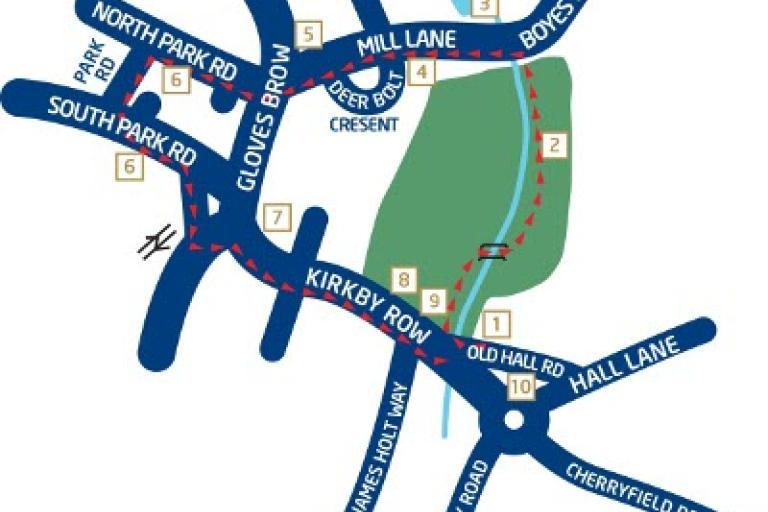Kirkby
Recorded in the Domesday Book as Cherchebi, Kirkby was one of six manors held by Uctred, the thane. In the mid-16th century, it passed to the Earls of Sefton, who remained the predominant landowners until they sold the land to the Liverpool Corporation in 1947.
For the first thousand years of its existence, farming and its related occupations were all Kirkby knew, and up until the 1920s, produce was still taken by horse and cart to the markets in Liverpool.
In 1884, the Liverpool, Bolton and Bury railway came to Kirkby, and with it, the development of the Victorian suburbs to accommodate the businessmen who commuted to Liverpool for work. Kirkby retained its rural feel well into the 20th century.
A more significant change came in 1935 when the East Lancashire Road was built, and later, in 1940, 12 farms were taken over by the Ministry of Defence to build the Royal Ordnance Factory, a major employer in the town. Industrial growth continued into the 1960s when the Kirkby Industrial Estate was built.
The population of Kirkby exploded in the 1950s, and Kirkby New Town was born to meet the demand for housing from Liverpool.

The route:
- Construction of the present St Chad’s Church began in 1869 and was built on the site of an earlier chapel, probably Norman. It was designed by Paley and Austin, renowned Victorian architects and built from red sandstone quarried locally in Melling and Kirkby. Its most treasured possession is the Norman sandstone font, striking in appearance with its ring of carved figures around the basin with a double row of serpents, one with three heads, representing the three enemies of man.
- Millbrook Park, Millennium Green. Follow the footpath through the park, an area of natural beauty and host to various habitats. Follow the date line, mosaic designs inlaid in the footpath, depicting Kirkby’s history.
- The earliest reference to a mill on Mill Lane was in the 13th century, and a mill and pond are clearly marked on a map of 1769. The mill, demolished in the 1950s, was used to grind corn and wheat and saw timber from local woods. Mill Dam Lake was popular for boating and swimming with both local people and day trippers from Liverpool. At one time, there was also a waterfall.
- The name Deerbolt has interesting origins. Sandstone for building came from small quarries known locally as Delphs. Deerbolt or Deerbough Delph was an early 19th-century quarry disused from the 1870s.
- Mill Lane Cottages were built in 1885 from brick and locally sourced sandstone. Notice the decoration on the gables.
- North Park Road and South Park Road are both designated conservation areas. The two short tree-lined avenues were developed after the coming of the railway, and the impressive villas reflect the status of their owners, for example, Waverly House and Ivylea. Waverley House dominates South Park Road and is Grade II listed. Built of brick, with stone dressings, it has a large square tower of three storeys with a pyramid roof.
- Two groups of semi-detached cottages dating from 1911 have the Molyneux Cross set in the wall. In the 17th century, the powerful and wealthy Molyneux family owned Sefton, Kirkby, Tarbock, Toxteth and many other parcels of land around Liverpool.
- Opposite James Holt Way were the Cocoa Rooms. Built in 1735, it was used as a café and hired out rooms on the first floor for meetings. By the 20th century, it had become a general store.
- Sefton Cottage is Grade II listed and built from materials typical of the area.
- The Weeping Stone, originally shaped like a cross, was found by excavators working on a new housing estate in Kirkby. It was a stopping place used to rest the coffins during the funeral procession, hence the origins of its name, the Weeping Stone.